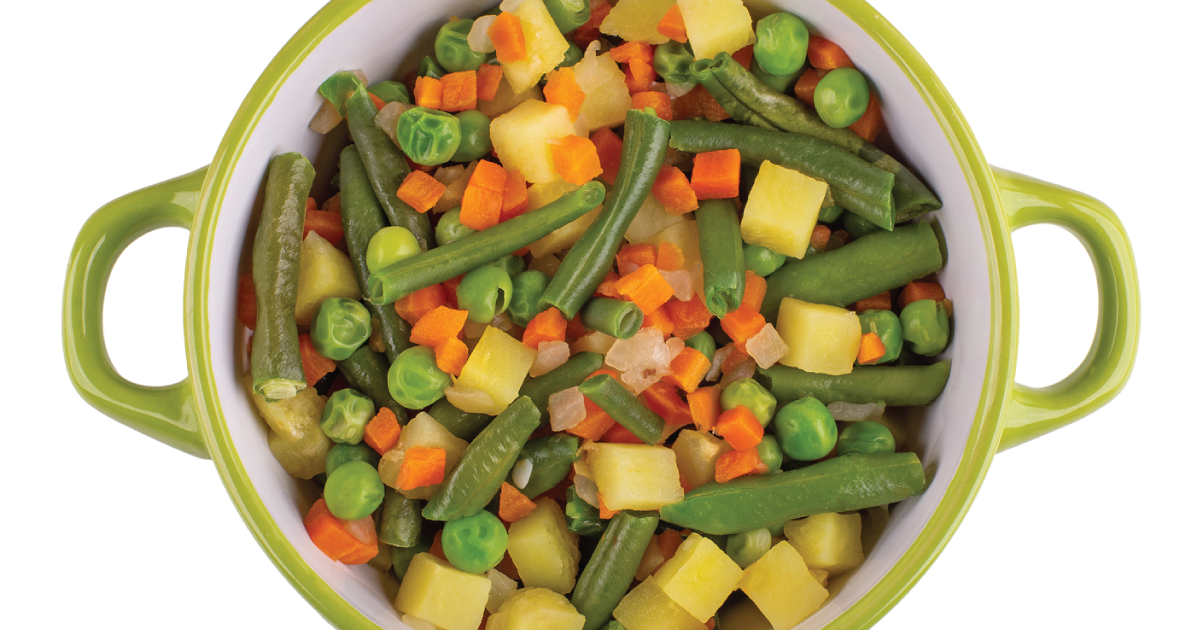
Shocking News About Beans, Peas and Potatoes
In recent years, researchers have discovered glyphosate, the active ingredient in Roundup and other common weed killer formulations, may affect your body’s ability to produce fully functioning proteins, inhibit the shikimate pathway (found in gut bacteria) and interfere with the function of cytochrome P450 enzymes (required for activation of vitamin D and the creation of nitric oxide and cholesterol sulfate).
May 27, 2019 | Source: Mercola.com | by Dr. Joseph Mercola
In recent years, researchers have discovered glyphosate, the active ingredient in Roundup and other common weed killer formulations, may affect your body’s ability to produce fully functioning proteins, inhibit the shikimate pathway (found in gut bacteria) and interfere with the function of cytochrome P450 enzymes (required for activation of vitamin D and the creation of nitric oxide and cholesterol sulfate).
Glyphosate also chelates important minerals; disrupts sulfate synthesis and transport; interferes with the synthesis of aromatic amino acids (shikimate pathway) and methionine, resulting in folate and neurotransmitter shortages; disrupts your microbiome by acting as an antibiotic; impairs methylation pathways; and inhibits pituitary release of thyroid stimulating hormone, which can lead to hypothyroidism.1,2
Roundup has also been linked to certain cancers.3 In March 2015, the International Agency for Research on Cancer (IARC) classified glyphosate as a “probable carcinogen” (Class 2A),4 based on “limited evidence” showing the weed killer can cause non-Hodgkin lymphoma and lung cancer in humans.
So far, three lawsuits against Monsanto (now Bayer) have resulted in high financial awards as Roundup was found to have caused the plaintiffs’ Non-Hodgkin lymphomas. The most recent plaintiffs were awarded a $2 billion judgment against Monsanto.5 All of this has led to grave concerns about glyphosate residues in food.
We’re now also realizing that genetically engineered (GE) foods are not the only source of this contaminant. Most conventional, non-GE crops are also contaminated, as are some organics. The reason for this has to do with the fact that glyphosate is commonly used as a desiccant or drying agent to speed up harvesting.
But that’s not all. Other desiccants may also be causing problems. As a whole, evidence suggests we need to be extremely cautious in our choices of plant-based foods, sticking to organics whenever possible, especially when buying high-lectin foods such as beans, peas and potatoes, as research shows the desiccant paraquat becomes exponentially more hazardous in combination with plant lectins.
Glyphosate Contamination Found in Many Foods, Including Organics
Several rounds of food testing have also revealed just how prevalent glyphosate is in our food. Test results6 published in August 2018 by the Environmental Working Group (EWG) showed 43 out of 45 food products made with conventionally grown oats tested positive for glyphosate, 31 of which had glyphosate levels higher than EWG scientists believe would be safe for children.
A second round of testing7,8 revealed glyphosate is a staple contaminant in Cheerios breakfast cereals and Quaker oats products. All 28 samples contained glyphosate; 26 at levels suspected to be harmful to children’s health.
Five of 16 organic oat foods also contained low amounts of glyphosate, even though it’s supposed to contain none, as glyphosate is prohibited in the U.S. organic standards. Similarly, testing9 done by Friends of the Earth (FOE) earlier this year found glyphosate in 100% of the 28 oat cereals sampled.
Glyphosate has even been detected in PediaSure Enteral Formula nutritional drink, which is given to infants and children via feeding tubes. Thirty percent of the samples tested contained levels of glyphosate over 75 ppb — far higher levels than have been found to destroy gut bacteria in chickens (0.1 ppb).10
It’s also found in air, rain, municipal water supplies, soil samples, breast milk, urine and even vaccines, including the pneumococcal, Tdap, hepatitis B (which is injected on the day of birth), influenza and MMR. The MMR vaccine had the highest amounts at 0.8 ppb.11
Now, food testing by The Detox Project shows glyphosate contamination is rampant in organic plant-based protein supplements as well.12,13 According to The Detox Project,14zero to 9 parts per billion (ppb) of glyphosate is a nondetectable level of no concern; 10 to 79 ppb is trace amounts of slight concern; anything above 80 ppb is of high concern.
When testing eight of the most popular pea protein brands sold on Amazon.com as of March 2019, one organic brand was found to contain as much or more glyphosate than conventional brands.
Two conventional (nonorganic) brands, Naked Pea and Anthony’s Pea Protein, had 39 ppb and 80 ppb respectively, while two separate batches of a top-selling organic brand, Orgain Organic Plant-Based Protein Powder, contained 83 ppb and 281 ppb.
Desiccation — A Serious Contamination Concern
One of the reasons so many grains and legumes are heavily contaminated with glyphosate is because it’s being used as a desiccant right before harvest. A desiccant is a chemical that speeds up the ripening of the crop and dries it out, which facilitates harvesting and allows it to be harvested sooner than were the crop left to dry naturally.15
Desiccation is also used to improve profits, as farmers are penalized when the grain contains moisture. The greater the moisture content of the grain at sale, the lower the price they get.
According to a 2017 study16 by University of California San Diego School of Medicine researchers, “The herbicide Roundup is sprayed onto genetically modified crops and applied as a desiccant to most small nongenetically modified grains.”
So, whether we’re talking about Roundup Ready GE crops or conventional, non-GE grains, glyphosate, the active ingredient in Roundup, “is found in these crops at harvest.”
As for how it ends up in many organic products is anyone’s guess. Drift from nearby conventional and/or GE crop fields is one possibility. Contamination during processing is another. Outright fraud, where a nonorganic crop is sold as organic is also a possibility.
